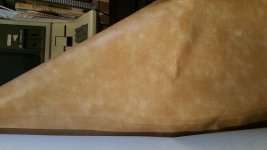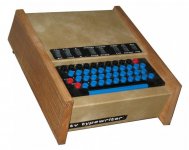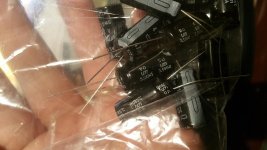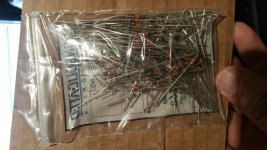More stuff came in!
Wasn't happy with the way my plain beige vinyl looked, so I ebayed around and settled on 'Desert Gold Distressed Faux Leather'. Here's a pic of it on the left, compared to a photo of the original under decent light to the right:


I don't know.. I'm feeling pretty good about it. It's got the bleached out areas like Don's. Color is tough because photos present it differently, but I looked at an average of several of them. I think we're in the zone, or as close to it as we'll ever get. And I'm sure Don's has changed in appearance from what it was new.
Also got my 4700uf caps:

So here's another authenticity thing -- obviously these do not look vintage -- the original 5000uf caps were big tall metal cans. I'm kicking myself for not saving the outer can part from my TVT2 when we replaced it.. I've heard of people hiding modern stuff under them. I've looked and looked but I don't see anyone making a) 5000uf caps or b) equivalent in solid cans like that. I've also assumed that I wouldn't want 'vintage' NOS caps even if I could find them, since they would have long ago dried out by now?
And anyway, if it were an original, by now the caps would be dried out and probably replaced anyway, right?
Finally here's some zener diodes:

Unfortunately I've not seen any good pics where these are used to compare to what original ones would look like.
And I have a line on getting etched metal labels, to replicate the 'tv typewriter' label and switch labelling Don did.
We're on track!






